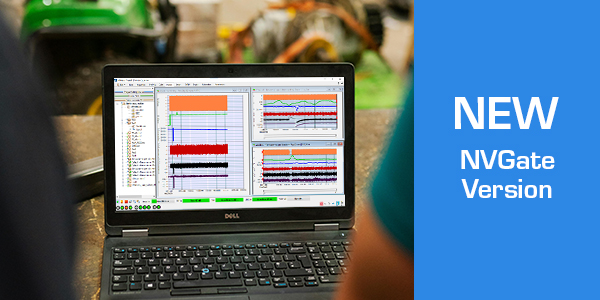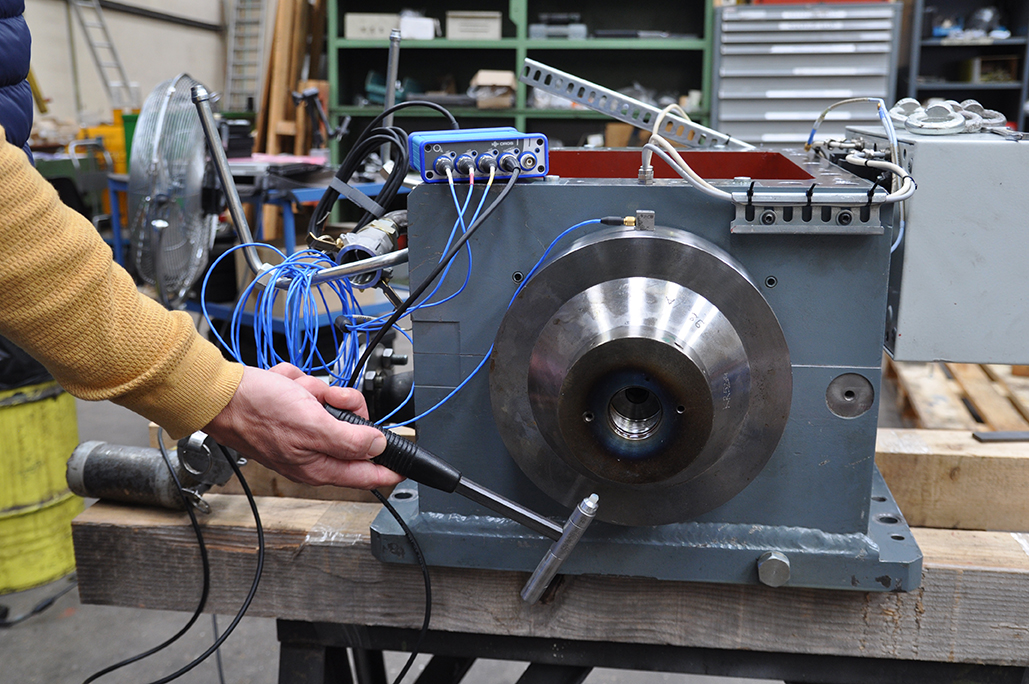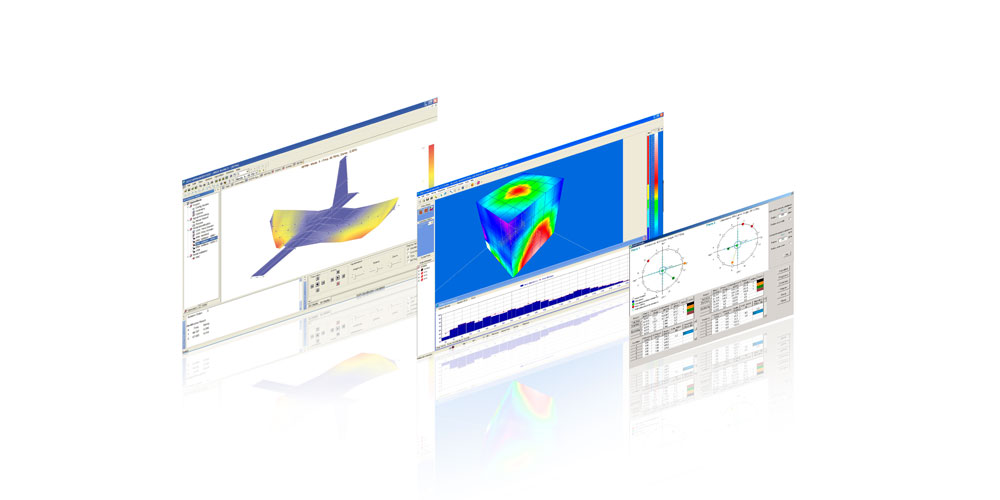
FFT analysis – narrow band spectral analysis
How to perform a FFT analysis? Our FFT analyzer software module is fully dedicated to narrow band spectral analysis topics.
FFT analysis module, a comprehensive spectral results set
The FFT module offers standard to advanced analysis results:
-
- Trigger blocks, averaged in time domain or instantaneous, weighted or not
- Spectra (up to 25601 lines at 40 kHz) , instantaneous, averaged in spectral or time domain, averaged complex
- Cross-spectra, FRFs (H1, H2), coherence, cross-spectra
- Lissajous, envelope demodulation
- Orders, overall bandwidth tracking
- Acoustics and human vibration weightings
- Any units: RMS, Peak, pk-pk, PSD, ESD, RMS PSD
- Any integration: single/double integration (from acceleration to displacement), single/double differentiation (from velocity to angular acceleration)
The perfect tool for bump tests and rooving impact tests
Acquiring and reporting bump/impact tests has never been so easy:
-
- The Force/Response windows apply to all channels simultaneously with a live overlaid of both weighted and not
- It shows the coherence and averaged FRFs before accepting or canceling the impact
- Impact route follows Excel-based steps sequence with direct indication and navigation from the NVGate control panel
- Automatic peak detection in the spectra with immediate Excel feeding for live bump test reports
Mixes acoustics and vibration with multi-bandwidth analysis
Mixing microphones and accelerometers in a measurement is a common application in NVH tests. The need of a common resolution (usually 1Hz) with different bandwidths for the 2 physics requires specific capabilities.
-
- In addition to the classical 102.4 kS/s sampling clock, NVGate features another one based on 65.535 kS/s
- 1 Hz resolution. Ex. 3.2 kHz with 3,201 lines for acceleration and 25.6 kHz with 25,601 line for noise
- Both results are gathered in the waterfall with a perfect synchronization, providing live colormaps from dozen of inputs
Isolate and clean signal with multi-domain averaging
The averaging domain choice (time, frequency, synchronized on a frequency) is a great tool to clean up signal buried by noise or to extract a specific signature. The FFT module proposes a wide selection of average and trigger types to highlight the right spectral signature.
-
- Synchronous time averaging (STA) lock the analysis on the signature cycle (ex. 1 pulse/rev). Averaged signal and spectral contents show stable and clean results
- Catch a machinery background spectra without stopping it. Triggering the STA on impacts will keep the impact signature only
- Frequency domain synchronous averaging (FDSA) allows synchronizing with one of the machinery signature frequency . Useful when the machine trigger is not accessible (ex. industrial fans first order frequency)
Rotating analysis
Rotating machinery generates frequency that are proportional to their speed (order). Part of it modulates also steady state bandwidths due to their structure. It is the case with gearboxes (classical or CVT) which modulate gears’ mech noise. The Constant Band Tracking (CBT) option features the right spectral analysis order extraction for such cases:
-
- Fixed extraction bandwidth centered on orders and nearest peak
- Equivalent noise bandwidth of weighting windows correction for faithful results metrology
- Up to 8 different orders per channel
- Fully real-time up to 99 % overlap for fast run-ups
Based on FFT analysis module, catch, track & save
Spectral analysis includes the notion of signal date. Especially when the unit under test operates out of steady speed. The flexible triggering and averaging capabilities of the FFT analysis module helps selecting the right instant for each analysis.
-
- Start & stop averaging events
- New analysis trigger
- Repeat averaging events
- Start & stop delays, negative or positive in sec or % of blocks
- Exponential, linear, peak hold, ref peak hold averaging type





